Ruined villages and failed utopias: The fascinating stories behind 10 company towns

From lost villages in the jungle to cities built with Lego, join us for a tour of 10 fascinating company towns.
Fordlândia
Hidden deep in the Amazon rainforest, close to the city of Santarém on the banks of the Rio Tapajós, lies the remains of Henry Ford's ill-conceived utopian town of Fordlândia.
The car manufacturer devised the settlement in the 1920s as a way of eluding the British monopoly over the supply of rubber, a key component of his motor vehicles. A colony in the rainforest, he realised, would allow Ford to produce his own. He considered Central America, but eventually opted for Brazil and signed a deal with its government granting him 2.5 million acres, and an exemption on export taxes, in return for a nine per cent share of the profits.
Construction began in 1926, but Ford quickly encountered problems. With no roads to the site, arduous journeys were made via the Rio Tapajós and many workers were struck down with yellow fever and malaria.
The layout of Fordlândia was meticulously planned. Brazilian workers were assigned one village; American managers another. Typical US-style houses were built, as were a hospital, school, library, swimming pool, playground, hotel – and even a golf course.
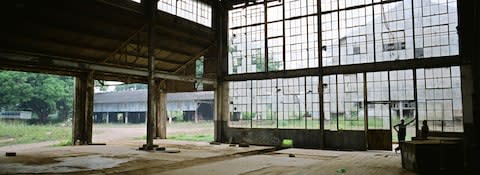
In 1928, two merchant ships arrived with all the equipment they needed - everything from bolts and doorknobs to the town's iconic water tower. Workers were recruited from Belém and Manaus (Fordlândia lies around halfway between).
The promise of good wages encouraged many to sign up, but Ford's curious set of town rules soon created discontent. Workers were forbidden from drinking alcohol, smoking tobacco or even playing football, while women were banned. Inspectors even visited houses to ensure the rules were being obeyed.
To get around the regulations, workers hid booze and other contraband items, or paddled upriver where they wouldn't be spotted. A satellite settlement - the "Island of Innocence", with a bar, nightclub and brothel - was established five miles upstream.

Workers were also given unfamiliar canned American food and hamburgers and disliked being forced to wear ID badges and work in the heat of the day.
Discontent soon became open revolt: in 1930 rebels cut the town's telephone wires and forced the manager to flee into the jungle for several days before the Brazilian army arrived to quell the uprising.

Ford faced other problems. His managers knew nothing of tropical agriculture, and his rubber trees fell victim to pests and blight. In 1934 Fordlândia was abandoned in favour of another location further downstream that offered better conditions. By 1945, however, synthetic rubber had been developed and that settlement was also left behind.
Henry Ford's grandson, Henry Ford II, sold both Fordlândia and the new town back to the Brazilian government at a loss of more than $20m (or more than $200m in today's money). Incredibly, given the vast sums invested in the project, Ford never actually visited either town.
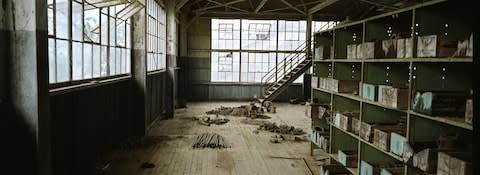
Many buildings remain, with the exception of the hospital (pictured below), which was dismantled by people looking for valuables. Other structures include the 50-metre water tower, which is still operational, a sawmill and kiln, and a three-storey workshop.
The future London in Aldous Huxley's Brave New World, published in 1932, was heavily inspired by Fordlândia. In the book, Henry Ford is a messianic figure to the World State, and "Our Ford" is used in place of "Our Lord".
Remarkably, the story of Fordlândia didn't end in 1945. After being given back the rights to the land, Brazil's Ministry of Agriculture installed several facilities in the area. The houses that once belonged to Ford's rubber tappers were given to the families of the Ministry's employees, whose descendants still occupy them. Around 90 people reportedly lived there at the turn of the 21st century, but that figure has grown to more than 1,000.

Pripyat
Perhaps the most famous company town of them all, Pripyat, in an obscure corner of modern Ukraine, was founded in 1970 as the Soviet Union’s ninth nuclear city (or “atomgrad”). All of its 50,000 residents worked at the nearby Chernobyl power plant.
This was not a location that the rest of the globe had thought about at length – even now, its sits on the edge of the known Europe, 100 miles north of the Ukrainian capital Kiev, but only six miles south of the border with outsider state Belarus. The Chernobyl Disaster of April 26 1986 changed all that. Or, at least, it did once the story was out. The secret did not break beyond the Iron Curtain until, on the morning of April 28, some 50 hours after the accident, radioactive particles were detected at Forsmark Nuclear Power Plant in Sweden (near Stockholm on the east coast), 680 miles from the disaster zone – and the realisation dawned that something dark had happened in the East.
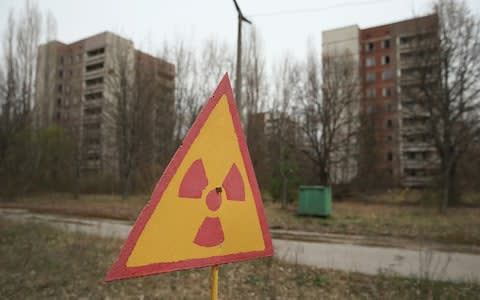
These alarming tidings were accompanied by a toxic cloud which, by now, was seeping across the continent. Belarus suffered the worst of its effects – poisonous rain; damage to plants and crops; in some cases, the birth of mutated animals – but the impact was also felt in Scandinavia, Switzerland, Greece, Italy, France and the UK. Newspaper features gasped, headlines fretted – as the nuclear age sent its deformed chickens home to roost.
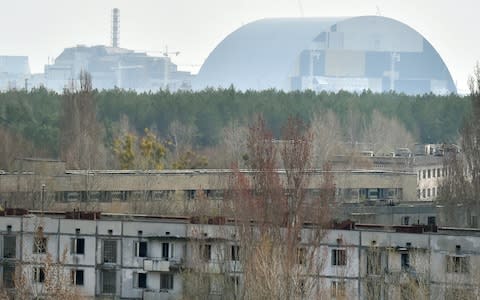
That "only" 31 people were killed directly – mostly staff who were in the immediate vicinity, or the brave souls who effectively sacrificed themselves in the battle to encase the bleeding reactor in concrete – has created the impression that, for all its notoriety and its pan-European aftermath, the Chernobyl Disaster was largely a localised affair. A more chilling figure is 400 – the number of times more radioactive material that was released into the atmosphere on that inauspicious April night than by the bombing of Hiroshima. Chernobyl was a moment when humanity considered the prospect of its own extinction.

And yet, fast forward 30 years, and the heart of the panic has become a hotspot for men and women with cameras and selfie-sticks. More than 10,000 tourists now explore the disaster site every year, snapping photos at the stricken power plant, and wandering the empty streets of Pripyat – which was evacuated on April 27 1986 (far too late in terms of the health of its citizens), and has lain abandoned ever since.
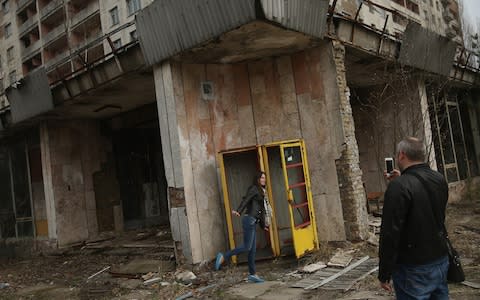
Visitors are screened before they enter the Exclusion Zone – the restricted space, 19 miles in radius, which surrounds the blast area. They are told not to sit down, or touch items within this cordon – and are checked for radioactive particles when they leave again. But the tour operators – mainly based in Kiev – who run trips to Chernobyl, insist that the site is safe to see, and even offer overnight stays at a hotel which has been freshly built to house these holidaymakers.
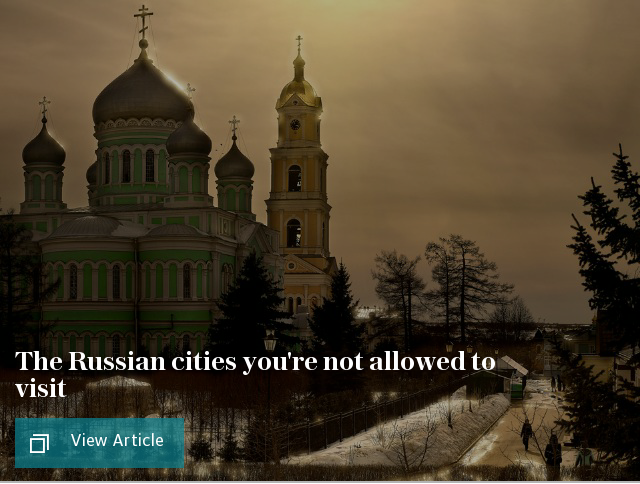
New Edinburgh
Not a company town in the traditional sense, New Edinburgh was established by Company of Scotland, founded in 1695 with a remit to establish trade with Africa and “the Indies”. Never heard of it? That’s because what remains has long since been reclaimed by nature. Allow us to explain.
In the 17th century, in an attempt to become a mercantile power like its neighbour to the south, Scotland sought to establish a colony in the Americas. It chose the Gulf of Darién, an uncharted, mosquito-ridden wilderness, having been convinced by Lionel Wafer, a Welsh explorer, that the isthmus was actually a rich, fertile land brimming with friendly locals.
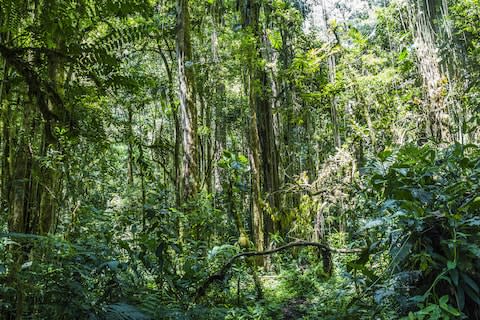
Landfall was made on November 2 1698, but doubts soon surfaced. “The site marked out for the proud capital which was to have been the Tyre, the Venice, the Amsterdam of the 18th century was overgrown with jungle and inhabited only by the sloth and the baboon,” wrote the historian Thomas Babington Macaulay.
“A mere morass, neither fit to be fortified nor planted, nor indeed for men to lie upon,” was the assessment of William Paterson, one of the company’s directors.
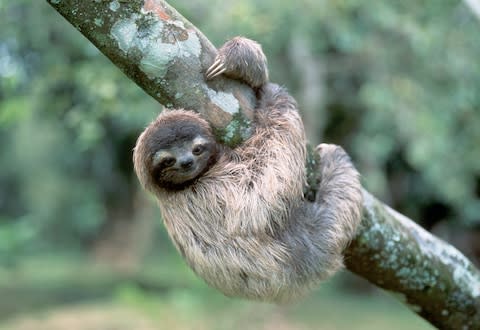
Nevertheless, the colonists made a fist of it, christening their new home “Caledonia” and its capital “New Edinburgh”. Their first task was to dig graves for the 70 who had died on the Atlantic crossing, Paterson’s wife among them.
Initially the local population were friendly, bringing gifts of fruit and fish, but they soon grew tired of the new arrivals, and were uninterested in the trinkets - wigs, mirrors, combs and other useless items - that the Scots had brought to trade. A fort - St Andrew - was built, which boasted 50 cannon but no water supply, and around it huts were erected. But the land was unsuited to agriculture and the colonists resorted to hunting turtles for sustenance.

The spring of 1699 brought torrential rain and disease, and by March the death rate was more than 10 per day. One of the settlers, Roger Oswald, wrote the following account of life in the failing port, where a pound of mouldy flour constituted rations for a week: “When boiled with a little water, without anything else, big maggots and worms must be skimmed off the top... In short, a man might easily have destroyed his whole week's ration in one day and have but one ordinary stomach neither... Yet for all this short allowance, every man (let him never be so weak) daily turned out to work by daylight, whether with the hatchet, or wheelbarrow, pick-axe, shovel, fore-hammer or any other instrument the case required; and so continued until 12 o'clock, and at 2 again and stayed till night, sometimes working all day up to the headbands of the breeches in water at the trenches. My shoulders have been so wore with carrying burdens that the skin has come off them and grew full of boils. If a man were sick and obliged to stay within, no victuals for him that day. Our Councillors all the while lying at their ease, sometimes divided into factions and, being swayed by particular interest, ruined the public... Our bodies pined away and grew so macerated with such allowance that we were like so many skeletons.”
When the party discovered that the Spanish were planning to attack, it was the final straw, and in July 1699 Caledonia was abandoned. While five ships carrying 1,200 left Scotland, just one - with fewer than 300 on board - made it back.
For more on the Darién colony, read the full story.
New Lanark
Robert Owen wasn’t your average textile manufacturer. He was a philanthropic social reformer who, in a bid to improve the living standards of workers at his New Lanark mill, built them a utopian village.
Its houses - where 2,500 lived - were clean and generously proportioned (by 19th century standards, at least), and Owen built a school for infants – the first anywhere in Britain. His favoured education methods were novel too. He looked beyond the 3Rs and insisted that natural history, music, dancing and games were part of school life. His schools pioneered the use of pictures, maps, and charts, and tried to make education more natural, spontaneous, and - most of all - enjoyable.

It’s all very noble, even if his Institute for the Formation of Character (a school for children but also a venue for evening lectures and classes for adults) sounds awfully Orwellian.
Enlightened reformer or benevolent despot who sought to control his workers from the cradle to the grave? Unesco clearly sides with the former. New Lanark’s mills closed in 1968, and at one point the village faced demolition, but it was saved and restored – and since 2001 has been a World Heritage Site. Some 400,000 people now visit each year.
Port Sunlight
Built on marshland near the River Mersey, Port Sunlight was the brainchild of the Lever Brothers, who wanted somewhere to house employees at their soap factory.
Construction began in 1888 and by 1914 the Merseyside marshes had been transformed into a village with 3,500 inhabitants. Its citizens lived well. The brothers created welfare schemes, provided education and encouraged recreation; the village also had allotments and public buildings such as the Lady Lever Art Gallery.
William Lever personally oversaw the development of the community - named after his company’s most popular cleaning agent, Sunlight - and set out a bold vision “to socialise and Christianise business relations and get back to that close family brotherhood that existed in the good old days of hand labour.”
Sounds admirable, but there were, alas, issues of control. For while Lever claimed Port Sunlight was an exercise in profit sharing, instead of sharing the profits he invested them into the village.
“It would not do you much good if you send [profits] down your throats in the form of bottles of whisky, bags of sweets, or fat geese at Christmas,” he said, justifying his decision. “If you leave the money with me, I shall use it to provide for you everything that makes life pleasant – nice houses, comfortable homes, and healthy recreation.”

Lever’s utopian vision endured for the best part of a century. Even in 1980 all households in Port Sunlight contained at least one Unilever (formerly Lever Brothers) employee. But it was in this decade that the first private sales of homes were made and Lever’s socialist vision disappeared like soap suds down the sink.
Today Port Sunlight contains 900 Grade II-listed buildings. Incredibly, every house is unique and there have been countless calls to make the model village a World Heritage Site on account of its architecture. Fans of Peaky Blinders will likely recognise one Port Sunlight property, which doubled as Aunt Polly’s Sutton Coldfield pile in the hit BBC series.
Bournville
It was the smut-belching powerhouse of the Industrial Revolution, but in the 1820s the city of Birmingham also spawned one of the world’s most celebrate confectionery brands: Cadbury’s.
Founded by the eponymous John Cadbury, who also traded tea, the chocolate brand was taken over by his two sons, George and Richard, in 1861. The pair had grand plans for the family business and bought 120 acres of greenfield land outside Birmingham to build a bigger, better factory.
The Cadbury brothers named the area Bournville - after a local river - and set about building their new factory. However, their plans soon evolved to incorporate a model town, which promised to alleviate workers of the “modern, more cramped living conditions” that were the norm back then.
Employee fitness was a top priority for the Cadbury brothers, who designed the town to include many recreational facilities, including playing fields, running tracks and hockey pitches. A cricket pitch was also built opposite the chocolate factory, which, if you’re old enough, you may remember seeing on boxes of Milk Tray.
The brothers were so taken with their utopian own that they named one of their products - a drinking chocolate - in its honour. Contrast that with the Lever Brothers, who named their town after a cleaning agent.
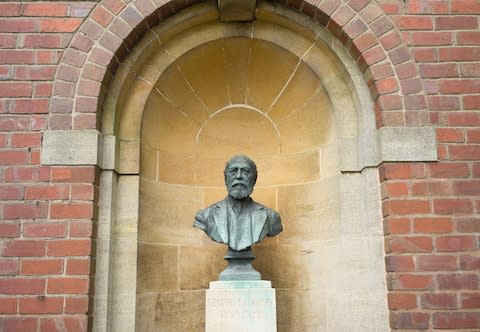
There was, alas, one major drawback to life in Bournville: there were no pubs. The Cadbury brothers were Quakers and didn’t believe in boozing.
In 1900 - the year after Richard Cadbury died - the Bournville Village Trust was established to manage the estate, which contains 7,800 homes and remains one of Birmingham’s most desirable suburbs. The trust has since expanded its influence to other towns in the Midlands, where it exercises considerable sway in matters of town planning.
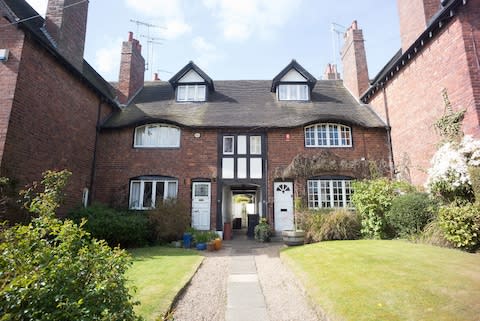
Oranjemund
Are you local? Then you won’t get far in this 1930s, Namibian town, which is strictly off limits to the outside world. Or at least it was until last year, when the hitherto privately-owned settlement was finally nationalised.
Prior to that, Oranjemund had been under the control of the diamond mining company, Namdeb, which oversaw the running of all services and amenities in the town, including a school, hospital and shop. The 4,000 odd residents were all Namdeb employees (or relatives of them) and worked in the nearby mines to extract precious stones for the company.
Citizens were entitled to free water, electricity and local telephone calls, but if outsiders wanted to pay residents a visit they would have to apply for a Orwellian-esque permit.
Not anymore because according to local media the council has now finalised an agreement on the transfer of assets, properties, municipal services and infrastructure, which will enable the local authority to function independently of Namdeb.

Billund
This Danish town dates back to the 17th century but its modern history is intertwined with a single company: Lego. The purveyor of little plastic bricks was founded in Billund in 1932, but really took off in the 1960s when a warehouse fire destroyed most of its wooden toys and prompted the firm to focus on plastic. In 1968, Legoland Billund opened, attracting 625,000 visitors in its first year (there are now eight Legoland parks around the world, with three more planned), and the company employs more than 13,000 people, including a fair proportion of Billund’s residents. It even paid for the construction of Billund Airport, which handles more than 3.3 million passengers a year.
One of the newest additions to the town is the remarkable Lego House. Telegraph Travel’s Sally Peck, who visited last year, wrote: “While its roots may be in the past, every inch of this 130,000 square foot temple to the plastic stackable brick telegraphs modernity: it doesn’t just look like the Googleplex, it also offers a window into the future of play.” Read her review to find out more.
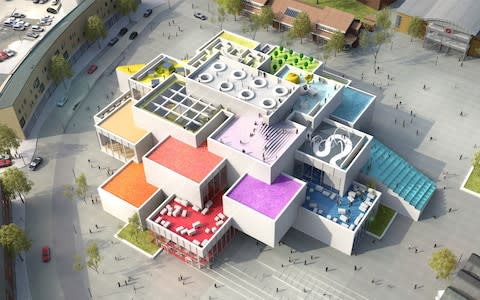
Kiruna
This remote town in Swedish Lapland owes its existence to a mining company that wanted to extract iron ore from the surrounding landscape, but needed somewhere to house workers. It built homes, schools, a hospital, a hotel and a police station, as well as the town’s eye-catching church. In 1900, just 222 people lived there; that rose to 7,438 by 1910, and 12,884 by 1930. The world’s northernmost tram system was added in 1907, and Kiruna remains home to the planet’s northernmost ultra-low energy (“passive”) house, spaceport (Esrange Space Center, built in 1964), laser cutting machine and crematorium.

Its growth means it is now the main gateway for tourists wishing to visit Swedish Lapland. The world famous ICEHOTEL is found in the nearby village of Jukkasjarvi, while husky sledding and snowmobiling activities are offered by local tour operators.
Mining built Kiruna, but it also threatens it. Mining-related subsistence is causing problems, and the town is in the process of dismantling 3,000 homes, schools and a hospital, and moving them to a new centre a couple of miles down the road.
Willow Village and Mountain View
The concept of the company town lives on in the 21st century. Facebook recently proposed the construction of Willow Village (or “Zucktown”, as it has been labelled), a neighbourhood adjacent to the company’s HQ in Menlo Park, California. It would have as much as 1.75 million square feet of office space, 1,500 apartments, 125,000 square feet of shops, a 200-room hotel, a visitor center, and a very precise 5,319 parking spaces. Facebook currently has 15,000 employees at Menlo Park, but expects that number to grow to 35,000 within 10 years. Willow Village could accommodate 9,500 of them.

What would life in a town built by Facebook look like? Clean and green - it will have eight acres of parks, plazas and bike-pedestrian paths - but surely a little sterile.
And Google is at it too. Mountain View, also in California, has existed for 116 years, but the search behemoth is staking claim to at least partial ownership with the construction of a vast new facility containing 5,000 homes, stores, cafes, gardens – and a space for theatrical performances.


